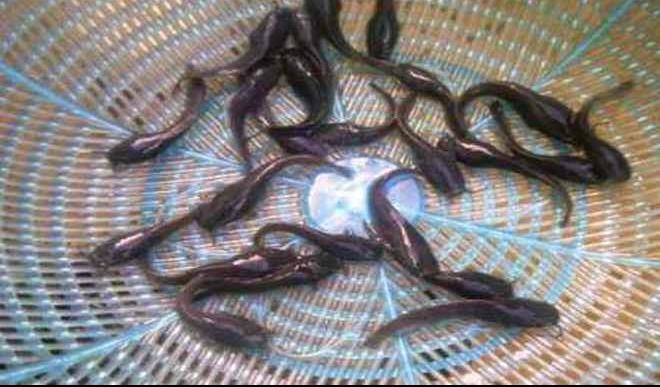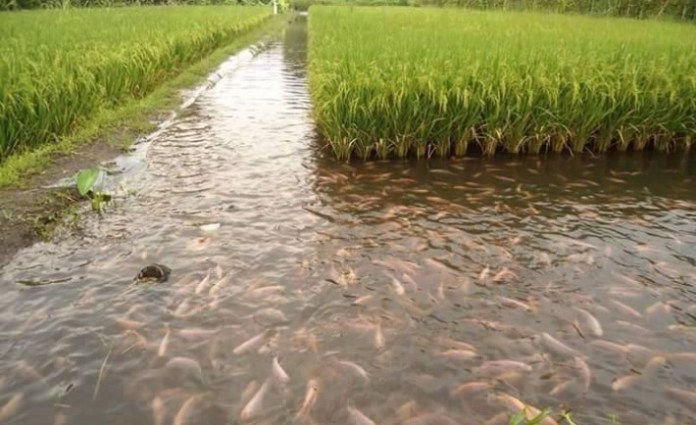 A food storage program is essential to provide for ourselves and our family members in an emergency. The biggest motivator most adults have is to avoid hearing a hungry child cry. Even the most “macho” man is distraught if he cannot provide food or beverage to prevent a child from suffering.
A food storage program is essential to provide for ourselves and our family members in an emergency. The biggest motivator most adults have is to avoid hearing a hungry child cry. Even the most “macho” man is distraught if he cannot provide food or beverage to prevent a child from suffering.
Every individual does not like the same foods. Each family member should have some input into planning what foods to store. A simple, sensible rule is to store the foods that you normally eat, if they provide an adequate diet. This rule will insure that,
l) family members will eat the food that is stored,
2) stored food will be consumed within the shelf-life period.
If the family prefers corn flakes, milk, sugar, juice and bread for breakfast, then these are the items to store. It is difficult to imagine much enthusiasm at the breakfast table if this family were to sit down to whole wheat, powered milk, honey, and a vitamin pill. A diet of these foods would become monotonous in a few days. Additionally, a marked alternation in diet could cause some temporary digestive problems.
Food comes in many forms. Fresh, frozen, dehydrated, canned, salted/cured, pickled, smoked, and pasteurized food can all play a role in a good storage system. All of these foods require some energy for their production, harvesting, preservation, storage, and preparation (cooking). In the absence of traditional energy sources some food forms may not be available or may not store for the normal shelf-life period. It is possible to convert some forms of food with short shelf-life into other forms with longer shelf-life. Fresh apples which spoil in 3-4 weeks at ambient temperatures (70°F) may be held 4-5 months at refrigerated temperatures (32°F). Frozen meat may be thawed, salted to a level of 12 percent salt, and then held at 60°F for several weeks. Before the meat is consumed salt must be leached from the tissues using
fresh water so the resulting cooked product will be palatable. Frozen meat may be thawed and then canned without loss of quality. Vegetables and fruits which have been frozen are not acceptable when thawed and canned, but some kinds may be readily dehydrated after being frozen for short periods.
There are a number of approaches to building a food storage program. Only two will be outlined, which can be adapted to fit individual needs. A major reason for not having food storage is the expense. A simple way to avoid a large cash outlay is to merely purchase double the items on the grocery list with each shopping excursion. The extra items are then marked with the purchase date and put into storage to be rotated out and replaced on the next shopping trip. Perishable items such as fluid milk or eggs are difficult to work into this system.
Therefore substitutes such as nonfat dried milk may be purchased for storage. Keep in mind,however, that there is a limit to the length of time that even these semi-perishable or dehydrated items can be stored.
A disadvantage of the double purchase system is that it is not as easy to benefit from sales prices. One advantage is that items are only purchased that are routinely used in menu planning, thereby reducing waste and improving rotation.
Another approach to beginning a food storage program is to use a lump sum of money such as a tax refund or a bonus check to purchase a large amount of basics for your family.
The pamphlet “Essentials of Food Storage” has suggested that basics should include wheat, sugar or honey, salt and nonfat dried milk. While it is true that these items do store well, it is important that the family will use what they store. This list could be modified to include grain products such as wheat and white flour, pasta products, rolled oats, rice, dried beans, split peas, lentils and other dehydrated fruits and vegetables. Cracked or whole wheat products do not store well
THE STORAGE AREA
The storage area should be located where the average temperature can be kept above 32°F and below 70°F. Remember that the cooler the storage area the longer the retention of quality and nutrients. Freezing of some items, such as canned products, should be avoided since the expansion of the food during freezing may rupture (metal) or break (glass) the container, or break the seal on lids on glass bottles, and allow the food to be contaminated.
This could pose a serious safety risk when the food thaws. The storage area should be dry (less than 15 percent humidity), and adequately ventilated to prevent condensation of moisture on packaging material. The area should be large enough so that shelves can accommodate all of the stored food and adequate space is available to keep the area clean and tidy. A 9 x 12 foot room with 10 foot ceilings will provide adequate space for a family of six to store an 18 month supply of food.
Food should not be stored on the floor. It is a good idea to have the lowest shelf 2-3 feet off the floor in flood prone areas. Shelves should be designed so that a simple rotation system can effectively allow the oldest food to be used first and the newest food to be held within the shelf-life period.
When designing and building a food storage area, do it to minimize areas where insects and rodents can hide. As practical, seal all cracks and crevices. Eliminate any openings which insects or rodents may use to gain entrance to the storage area. Electrical equipment such as freezers, furnaces and hot water heaters should not be housed in the storage area. These appliances produce heat, unnecessarily increasing storage temperatures. Insulation of the storage area from other areas of the house will effectively reduce the average yearly temperature of the food.
STORAGE LIFE
Quality and nutritive value of food deteriorates during storage, therefore foods should not be held for long periods beyond their established shelf-life. When food is stored too long, there is the risk of two things happening: 1) color, flavor, aroma, texture or appearance deteriorate to a level where people will not consume the food, and 2) nutrient deterioration may be severe enough to render the food an unreliable source of specific nutrients.
CAUSES OF DETERIORATION
Self Destruction
All living systems, whether plant or animal, were designed with a self-destruction mechanism. With death or harvest, this mechanism is activated. If allowed to proceed, naturally occurring enzymes in the food will cause discoloration, and undesirable flavor and textural changes such as when an apple rots. As animals and plants are slaughtered or harvested, they lose the protective devices provided by a living system. When wheat is ground, the kernel dies and becomes vulnerable to rancidity.
Microorganisms
Bacteria, yeasts and molds are the most common causes of spoilage of food and foodborne illness. Processing methods are designed to control microorganisms by either killing them (ex. canning) or preventing their growth (ex. drying or freezing). It is important to realize that a food which is safe due to inhibition of microorganisms loses that safety when
conditions change. Dried beans that are cooked are no longer safe to store at room temperature. When meat is thawed, it still contains living organisms and therefore must be held under refrigeration and used within a fairly short time period.
Insects and Rodents
Rodents deposit waste products in stored grains. Insects grow in flour, hatching eggs, to produce larvae. Cleanliness and good packaging are important in the avoidance of both problems.
Contamination
Stored food can become unsafe to consume from contact with undesirable substances. Be aware of what nonfood material is in close proximity to the stored food. This includes packaging in nonfood-approved substances such as storing wheat in plastic garbage bags.
Chemical Changes
Flavor and color changes can occur during storage; especially when stored in packages which do not exclude air and light. Baking powder can lose its sizzle and baked products won’t rise.
To be continued………
Like This page on Facebook to keep in touch @ http:/www.facebook.com/Agricbusiness or Follow us on Twitter @ AgricBUSINESS




